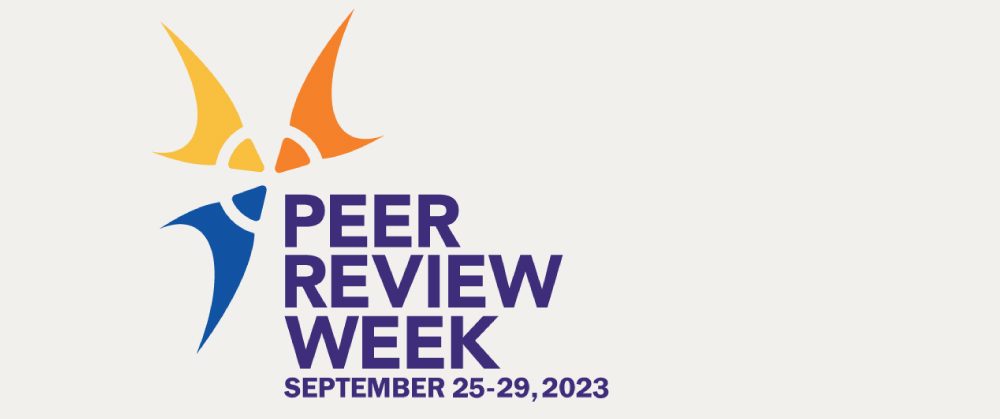Every year, the ASHA Journals participate in Peer Review Week, a global celebration of the importance of peer review to maintaining research quality. This year’s theme is “Peer Review and the Future of Publishing.” As noted in the theme announcement, “scholarly publishing is in a period of rapid, transformational change, fueled by new policies, new business models, new technologies, and a drive toward increased transparency and reproducibility.”[1] This week, we’re highlighting how the ASHA Journals are implementing the latest developments in peer review.
New Technologies
In the past year, it’s been hard to ignore the rise of artificial intelligence (AI), including generative language models such as ChatGPT. At ASHA Journals, we are monitoring this technology closely and are looking to develop a clear, consistent policy on the use of AI technologies in general.
However, one thing is instantly clear: Using generative language models while writing or reviewing an article is not allowed. Whereas some researchers believe that a program like ChatGPT could help them with their review, this belief poses a danger to the confidential nature of the peer review process. In addition, ASHA’s Vice President for Science and Research Sumitrajit (Sumit) Dhar warns that these language models “learn from closed sets of information and make a narrative,” which could lead to false information.
Stay tuned for more information on AI, and generative language models in particular, as the ASHA Journals Board looks to release a full policy in the future. We’ll be covering any AI-related policies instituted by the Journals Board in future Context blog posts.
Open, Transparent, and Accessible
The future of research is one that is open, transparent, and accessible. During the past decade, we’ve made a variety of developments at ASHA Journals to increase each of these elements and build a future foundation for this work.
We’ve published more than 500 open access articles in accordance with principles and practices around the world since 2013—including 125 in 2023 alone! Not only can these articles be accessed freely by everyone, but often, the data and materials are made available for other researchers to use.
ASHA’s journals have also implemented Transparency and Openness Promotion (TOP) guidelines, encouraging authors to share not only their results, but their data, program code, and other methods. Increasing transparency in the research process and in the reporting of study findings improves the reproducibility of research by enabling others to gather enough information to allow for replication and validation, building trust in science. In addition, data sharing supports the creation of new science that is built on previous findings, making the research process more efficient.
Finally, CSD research should be accessible outside of the research community at large. That’s why we encourage authors to add a plain language summary, either during submission or via their Kudos profile, that appears alongside their article. This summary explains to readers what the article is about and why it’s important—thus making scientific findings quickly available to clinicians and accessible to the general public.
Looking Ahead to the Future
The ASHA Journals are committed to diversity, equity, and inclusion, and are constantly looking for ways to include people from historically underrepresented groups in our peer review process. To learn more about getting involved with peer review at the ASHA Journals, you can start at the ASHA Journals Academy. Begin with our Peer Review Excellence Program (PREP) to learn more about the roles at our journals and your next steps toward getting involved.
The ASHA Journals are continuously working to implement new tools, technologies, and ideas to help maintain and improve peer review. By keeping on top of trends in the industry, we strive to provide authors and reviewers with a state-of-the-art experience while providing our readers with up-to-date research.
Previous Coverage of Peer Review Week
Peer Review Week 2022: Supporting Research Integrity
Peer Review Week 2021: Identity in Peer Review
Peer Review Week 2021: Demographic Data Collection in ASHA Journals
Peer Review Week With the ASHA Journals: Trust in Peer Review (2020)







